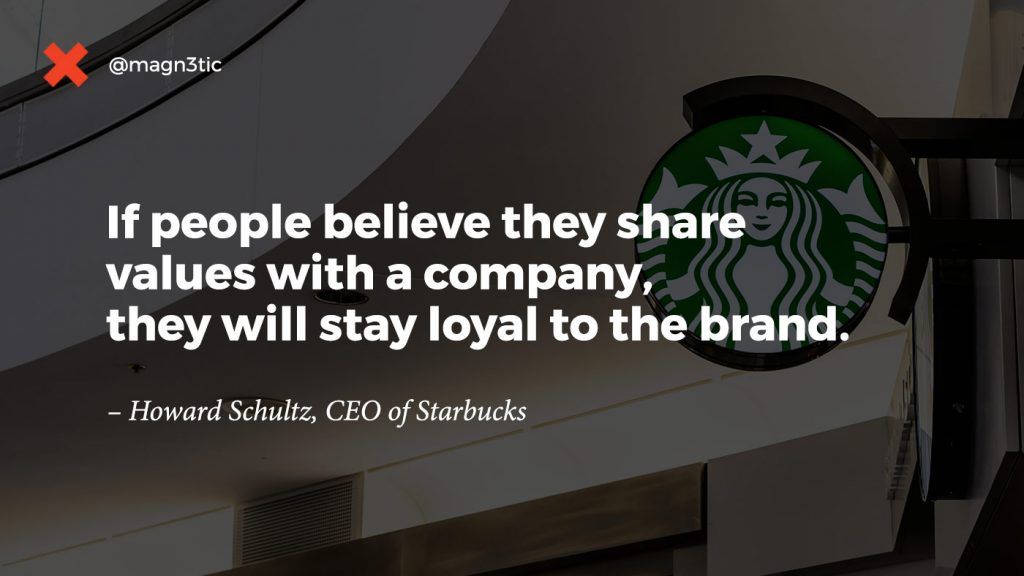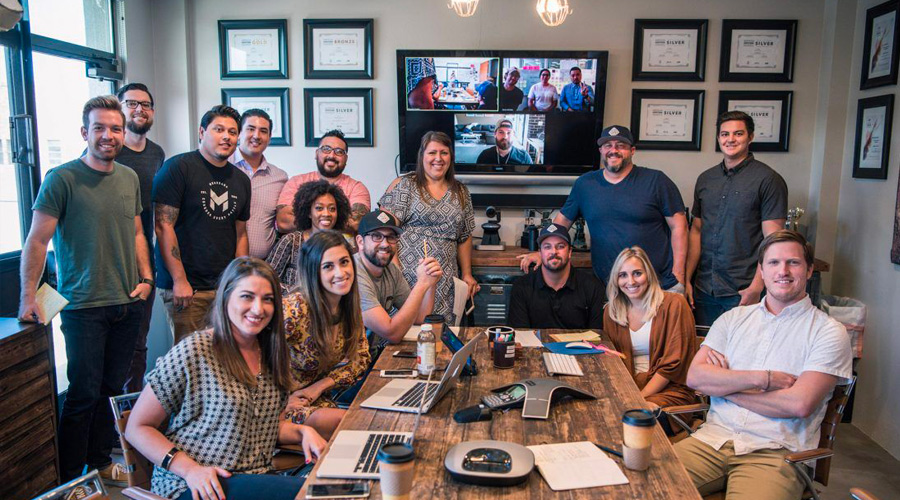So, the time has come to name your brand. Exciting times! But before you go firing from the hip on your brand naming journey, let’s pause and take a look at how you might go about arriving at that killer brand name you so desperately seek.
First things first...
Choosing a brand name needs to stem from a successful brand strategy.
Once you develop a sound strategy, only then does choosing a brand name become fairly straightforward and, if you can believe it, fun!
Why Brand Naming is Critical
Let’s get one thing straight, a brand name is not a deal breaker. In fact, the essence of a healthy brand should center around the brand’s purpose and belief system. These two pieces are what ultimately drive your brand’s success. That said, your brand’s name can be one of many persuasive elements at your disposal for providing a memorable experience for customers. Let’s take a look at the history of brand naming.
A Quick Look into the Past
The concept of branding began way back in ancient Egyptian times – roughly 2,700 BC. Farmers would physically burn their name or symbol into their livestock to differentiate it from others. Hence the name “branding”. Some farmers were known for their superior livestock and customers would seek out their unique brand as validation. Name’s held equity even then.
Today, there’s a lot more that goes into a brand than simply slapping a logo on a product. When done correctly, a brand naming is just one of the many results of a successful brand strategy.
Related Reading:
Experiential Marketing: An Authentic Way To Build Your Brand Presence
Powerful Brand Name Examples
So, what differentiates a good brand name from a bad one? The brands that do it right begin by identifying their core values and beliefs, then manufacture a word or phrase that triggers the emotions the brand wants customers to feel when they experience the brand.
 Let’s look at a few iconic brand names that do this well.
Let’s look at a few iconic brand names that do this well.
Google – the boundless brand name
So how’d the tech giant land on this once goofy name? It’s actually a play on the word “googolplex”, which is apparently just a really, really big number. The team liked the name and felt Googol fit the boundless nature of the brand. During their URL availability search, however, they wound up misspelling the word as “Google”. What a profitable typo that was.
Fast forward to today and Google is used as a verb for searching something on the web. People trust the search engine for its functionality and values. In fact, Google’s corporate code of conduct is “Don’t be evil”. The founders obviously saw the potential of their search platform and vowed to use it for good.
Jeep – a brand name that empowers exploration
This brand name is most commonly believed to derive from the letters GP which stand for (Government Purpose) or (General Purpose). The Jeep is arguably the oldest 4×4 and SUV on the market.
Today, the brand name Jeep empowers customers to feel capable of exploring anything and everything. People who own a Jeep are part of a tribe. When you see another person driving a Jeep you give them the nod. Jeep has done well with reiterating the brand’s core values through numerous marketing campaigns. One of the more recent campaigns entitled: “The World Comes With it” is a great example of the emotion tied to the Jeep brand name.
Vans – a brand name centered on Southern California culture
Vans originates from the Van Doren brothers who lived in Anaheim, CA. The brothers and a few buddies began manufacturing and selling canvas shoes in 1966 and the rest is history. When you think about Vans, you’re transported to Southern California’s skate and surf culture. Vans is a feeling, and despite starting in Southern California, today the name is recognized and adored all over the world.
5 Types of Brand Names
There are countless types of brand names out there, but let’s explore the five most common types of brand names as well as some pros and cons for each.
Descriptive Brand Names
Descriptive names describe what the brand does. While this type of name is palatable for customers, they don’t always sound as exciting as other types of names.
Examples: PayPal, Toys R Us, Subway
Arbitrary Brand Names
Arbitrary names use random words as metaphors to tell a story. These types of names tend to be vague and symbolic, and are generally unrelated to the product or service the brand offers. Arbitrary names are easier to trademark but tend to be more abstract than other types of names, so you run the risk of confusing customers when employing a poorly executed arbitrary brand name.
Examples: Patagonia, Shell, Amazon
Brand Name Acronyms
Acronyms are abbreviations comprised of the first letters of each word they represent. These names are highly functional, so they should be easy to say and easy to remember. The downside is, without context, your customers won’t know much of anything about your brand.
Examples: IBM, BMW, H&M
Founder’s Name
These names usually rely on heritage and legacy to tell their story. So, if you’re in it for the long haul, go ahead and slap the family name on your brand. Just know that it can take years, even decades, for a name like Johnson & Johnson to mean anything.
Examples: Campbell’s, Ford, Ben & Jerry’s
Fabricated Brand Names
When in doubt, just make something up! That’s the beauty of fabricated names. They also tend to be the easiest to trademark and are super fun to brainstorm. Over 70% of the best brands in the U.S. have adopted this brand naming approach. On the downside, they can be difficult for consumers to remember if a brand lacks an in-depth story.
Examples: Kleenex, Google, Xerox

How to Name Your Brand – A Look at Our Agency’s Brand Naming Process
At the end of the day, selecting a brand name can feel a lot like throwing darts. The process our branding agency uses eliminates guesswork by examining the landscape of your industry and the foundation of your brand before crafting a name from the ground up.
Conduct a Competitive Analysis and Audit
First, take a thorough look at what your competitors are doing.
- Are any of their names related to each other?
- Are they using the same category of brand name?
- Which brand names are most successful?
- Better yet, which competitors are the most well-known in the market?
- Why are they doing well?
- How are they positioned in the market?
Learn as much as you can about your competition’s approach and how they work to resonate with customers. This often leads to valuable customer insight.
Then Conduct a Customer Audit
Your brand needs to stand for something. Younger audiences like Millennials want to engage with brands that express their values and beliefs.
A recent Fast Company study found that 68% of Millennials claimed “creating change in the world” is a personal goal they hope to achieve. Insights like this can really help elevate your brand and identify the emotion you want customers to feel when they hear your brand’s name. Look at Jessica Alba’s The Honest Company, for example.
Maybe it’s a bit on the nose, but this brand name projects the values of honesty and ethical consumerism to a like-minded audience. Winner winner.
68% of Millennials claimed “creating change in the world” is a personal goal they hope to achieve.
– Fast Company
Use a Design Thinking Process for Brand Name Brainstorming
Now the fun part – brainstorming with your team to come up with a list of brand names.
To summarize, design thinking is a creative way to problem solve. The principle is centered around generating as many ideas as possible without even considering consequences. In other words, fail fast to find the solution quicker!
Once you’ve got a solid list of names, you can reverse engineer to see how each will work in a campaign, or how they’ll stand up against competitors.
We’ll typically generate 10-30 brand names per person and then narrow it down to the best of the best before moving into the next phase.
Testing Your Brand Name Ideas
Now that you have a short list of brand names, it’s time to put them to the test. Copy testing with friends and family is a good start, but get as specific as possible. We love running our ideas through a survey partner such as Qualtrics to qualify our efforts and see how our target audiences respond to each brand name. More times than not, this will help whittle down that shrinking list of yours.
One major benefit of using a survey for brand name qualification is the release of subjectivity. Using 3rd party survey sample groups forces our brand name selection to rely more on data than opinion or personal preference. This comes in especially handy as internal teams become more and more attached to one name over another.
Related Reading:
Copywriting for Brands: Startups Vs. Established
Revealing the new Brand Name
Once you’ve landed on a name, do everything you can to trademark it and secure domain and social availability. We often purchase a variety of URLs and look for immediate ways to secure the name within the industry. In fact, if you’re having trouble deciding between a few final names on your list, trademark availability can often help make that decision for you.
The Work Has Only Just Begun
Remember when we mentioned that a solid brand name isn’t a deal breaker? That’s because there are a million things that go into creating and nurturing a successful, well-respected brand. So, while landing on a killer brand name is a huge win and certainly worth celebrating, it’s only the first step of a long journey ahead.
The good news is you aren’t alone. Whether you’re struggling with brand naming or don’t know where to go next, give us a shout.




Join the Discussion